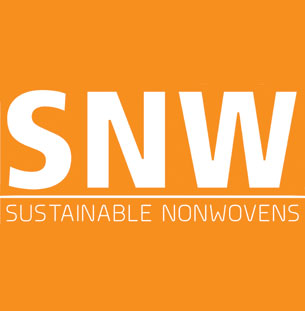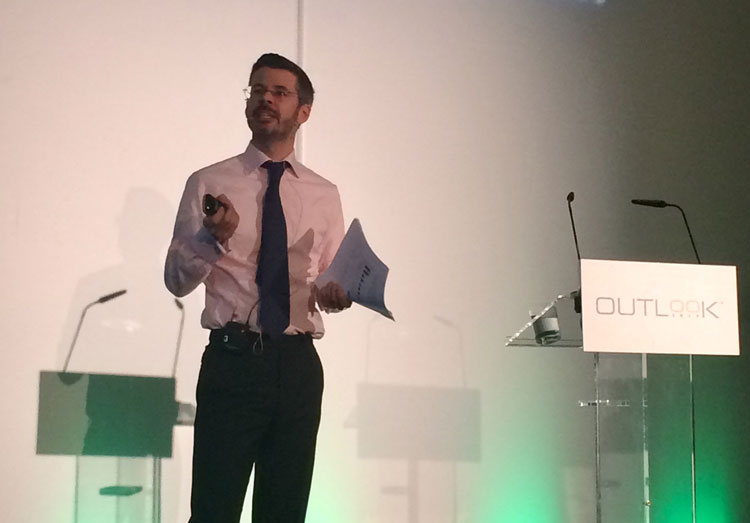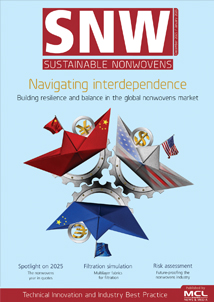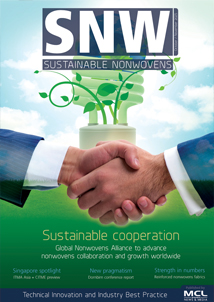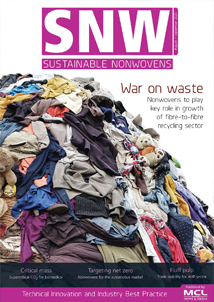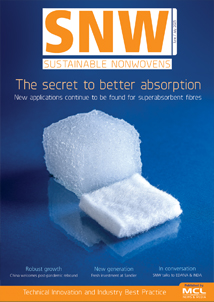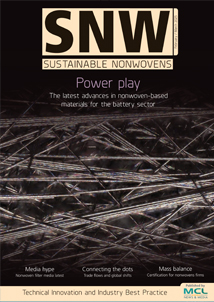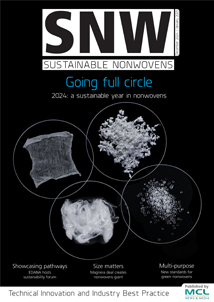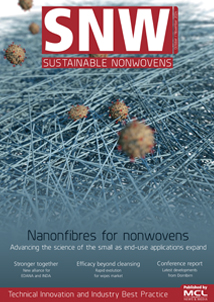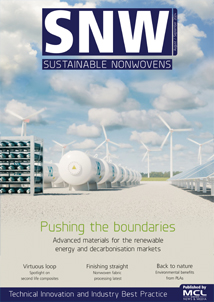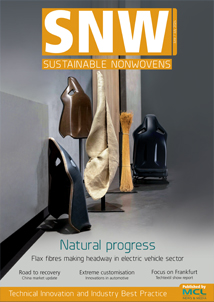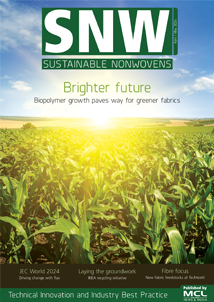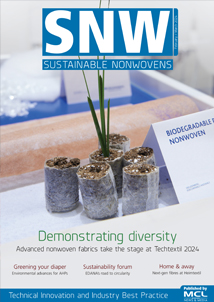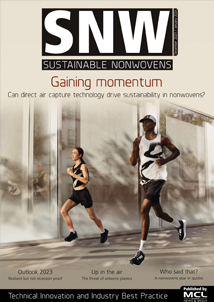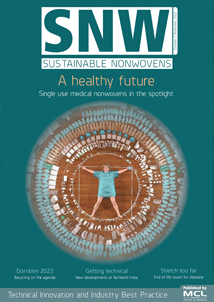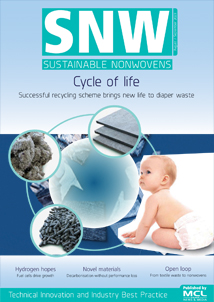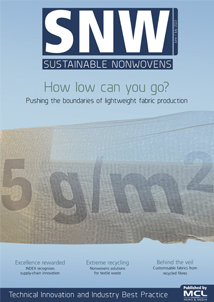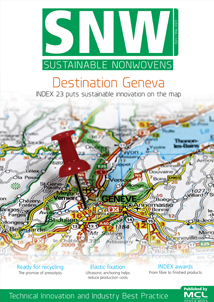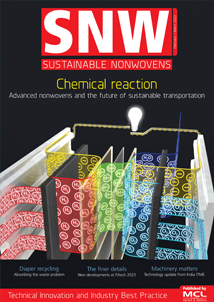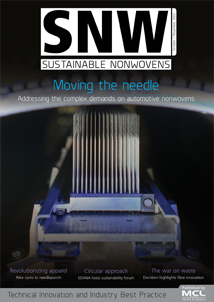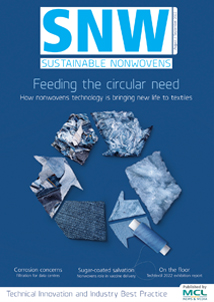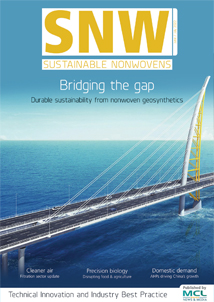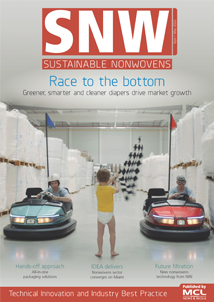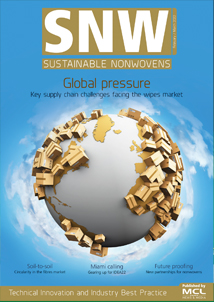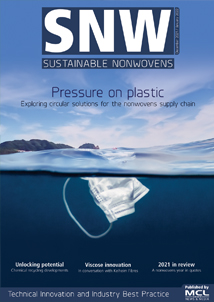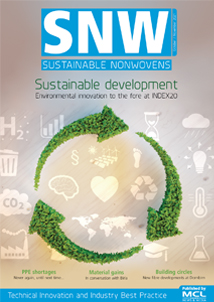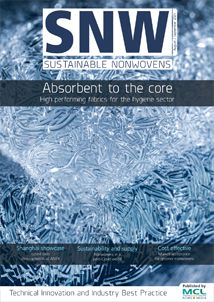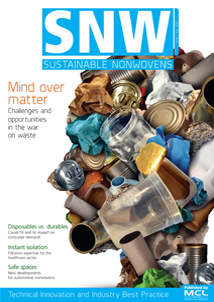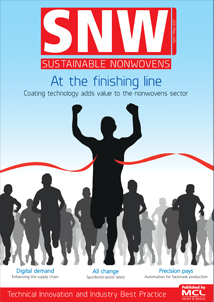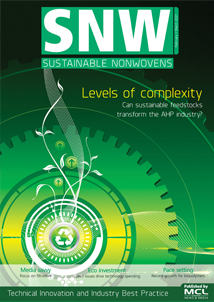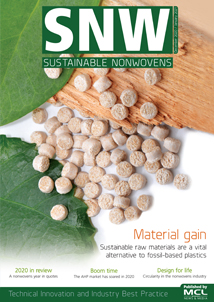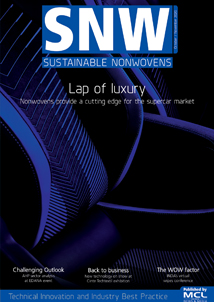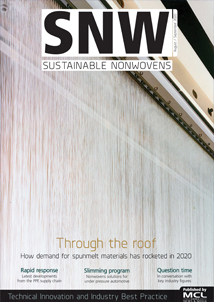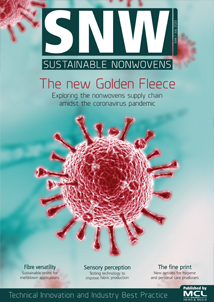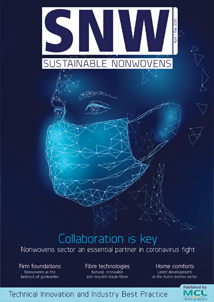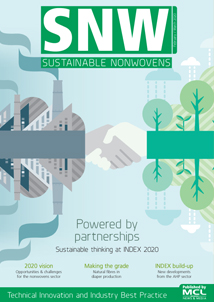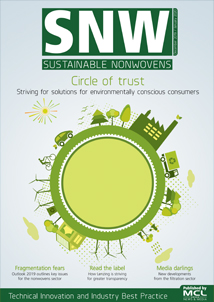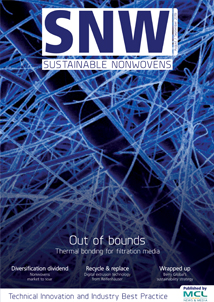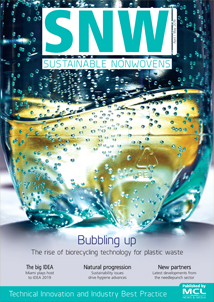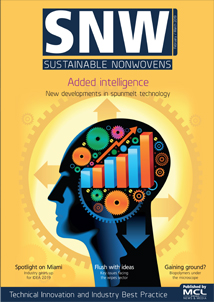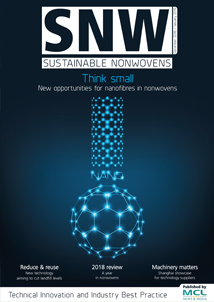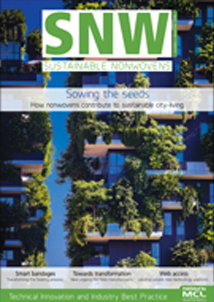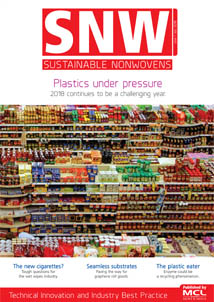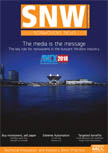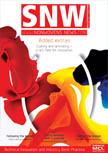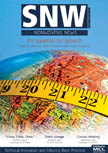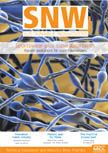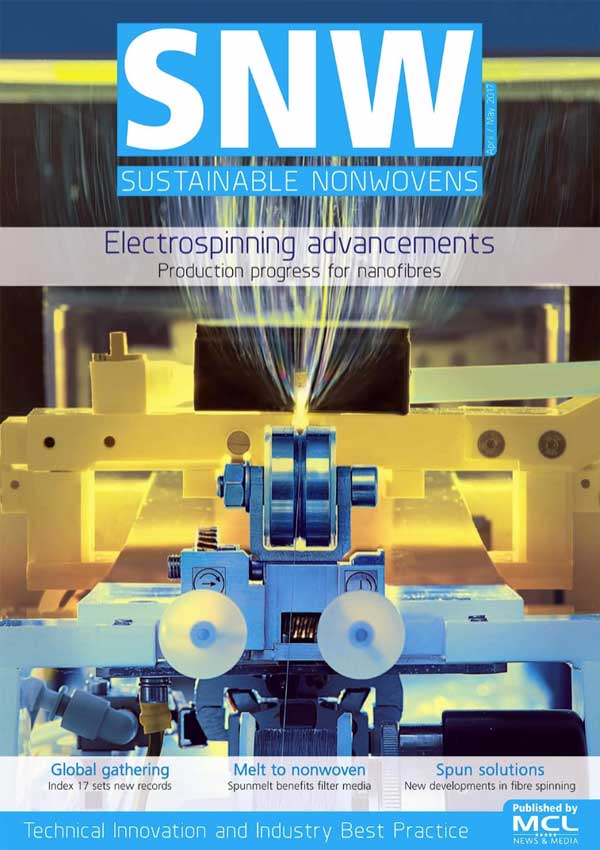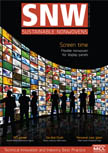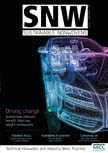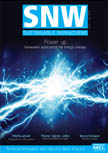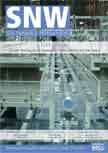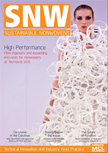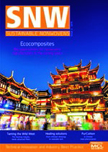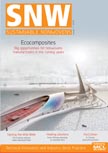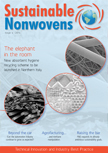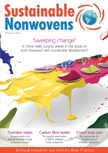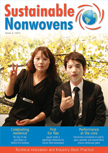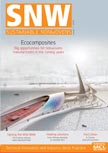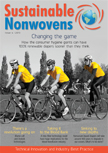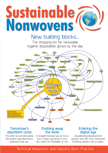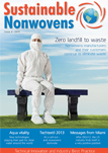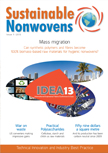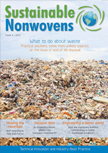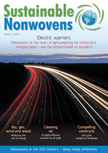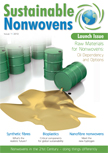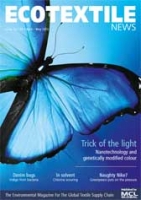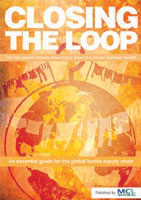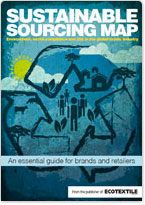During a series of market presentations at EDANA’s Outlook 2017, some interesting gaps, disparities and potentially new opportunities for absorbent hygiene products were revealed. Managing editor Adrian Wilson reports.
In a wide-ranging opening keynote presentation at the EDANA Outlook 2017 conference held in Cascais, Portugal, from September 27-29, Robert Ward, editorial director at the UK-based Economist Intelligence Unit, observed that for the first time in many decades, global political risk is now centred on the so-called ‘developed nations’, particularly in Europe and North America.
The drivers for this, he said, have been down to a crisis in respect of globalisation and what it is achieving for the general populations in these regions, along with an intellectual vacuum created by a general and very widespread resentment of elites.
Populism
The result has seen the emergence of populist movements across Europe, of Brexit in the UK, and of the election of Donald Trump. The election of Emmanuel Macron in France has been largely reported as the opposite of this trend, but Ward pointed out that it was instead a confirmation.
“There were no established parties in the second round of the French election, and while Macron has a mandate, he has limited popular support,” he said.
In the latest of such developments, of course, Angel Merkel’s government in Germany has been greatly weakened, and the country has seen the far-right AfD (Alternative for Germany) party gain a foothold.
“There is a movement in favour of de-globalisation and growth in rich countries is no longer seen as inevitable,” Ward said. “It’s bad news for growth in emerging markets too, and as US dominance recedes, repressed tensions will rise. The lack of a single powerful global actor will be a permanent feature in the long term.”
This is happening in parallel to the delivery of apparently strong governance from authoritarian regimes such as China and Singapore, while others, as in Russia and Iran, appear to be gaining ground at the expense of democracy.
Frustration
“In newer democracies, there is frustration at the mismatch between weak state capacity and the rule of law with democratic accountability,” Ward said, touching on other issues arising from around the world before returning to Donald Trump’s election, which he likened to that of the Reagan administration, whose aggressive anti-Japan trade policies he said are setting a precedent for Trump’s approach.
“There will be lots of skirmishes, but no all-out trade wars,” Ward said. “Trump has spoken of hitting Mexico and China with punishing across-the-board tariffs, but only the US Congress can raise them. The president can act unilaterally in time of war or national emergency but he would struggle to justify claiming either. We can expect an aggressive, targeted approach, with the approval of more dumping and anti-subsidy actions against imports, but the Obama administration was already doing this. If the US goes too far, other countries will retaliate because the US is vulnerable.”
Globally, big structural shifts are under way, Ward concluded, and India and China, despite bumps along the road, will be the key drivers of growth.
The Markets
This was a viewpoint only confirmed by the three presenters looking at the market for absorbent hygiene products (AHPs), during Outlook 2017’s Markets session.
A significant portion of AHP growth, however, will be as a consequence of two further issues now facing the world – the ageing of many populations and the parallel rise of obesity.
In comparing the growth potential of India with that of China, for example, Ritika Gupta, executive director of Business Co-ordination House (BCH), observed that the number of those aged over 65 in China will cross the 300 million mark by 2025.
“A high ratio of working age people-to-dependents has contributed significantly to China’s economic growth in the past two decades, but this is now changing,” she said. “By contrast, India has an increasing percentage of working age people and this will not peak until 2030, creating favourable conditions for a demographic dividend.”
Jan O’Regan of Cotton Incorporated showed Euromonitor statistics that put the number of people in 2016 over the age of 65 at 140 million in China, 96.7 million in the EU, 49.4 million in the USA and 34.6 million in Japan.
While this can be viewed as a problem societies have to deal with, it is of course an extremely positive thing that life expectancy is increasing across the world and AI products are making a very significant difference to the active lives of many older people.
“Fresh thinking regarding product design and positioning that makes these products a normal part of everyday life will lead to breakout success and market share gains,” O’Regan observed. “We have to work at eliminating the stigma that surrounds AI products.”
Obesity
Statistics for sections of the adult population deemed obese, however – ie over the age of 15 and with a body mass index (BMI) of over 25 – were truly shocking.
In Mexico, it’s 75% of the population (70 million people), in the USA 74% (195 million) in China 47% (534 million) and in the EU 55% (233 million).
While it could be argued that the bar is set a little too low in defining obesity, there is no doubt that this is an issue that will take very broad legislative and educational measures to address.
Retail values
Miles Agbanrin of Euromonitor put the retail value of AHPs in 2016 at $91.3 billion, based on a fixed dollar exchange rate.
Of this figure, diapers accounted for $42.3 billion, sanitary protection (femcare) for $29.1 billion, adult incontinence products for $7.9 billion and wipes (not including wet wipes) for $12 billion.
In the years to 2021, the Asia Pacific region will achieve the highest growth of an average 7% across these markets, while growth in the USA and Europe will be only around 1% due to the already very high penetration levels.
In the next five years, growth in the baby diapers market will be by some 41 billion units, equating to an additional value of around $1 billion. In developed markets, however, fierce competition is restraining growth.
“The plans of the brands have been based on trading up, or at least avoiding being driven down to private label price levels,” Agbanrin said.
A further 37 billion additional femcare units will be added to annual volumes by 2021, equating to $5 billion in value growth
It is the AI market that will see the highest growth in the next five years, albeit from its comparatively low base.
Agbanrin said that Euromonitor anticipates a further nine billion AI units to be being sold by 2021, equating to an additional $4 billion in market value.
Private label
In comparing the differing markets in Western Europe and Asia Pacific, he noted that the former has by far the biggest penetration of private label AHPs, at around 35% for baby diapers, over 30% for femcare and 17% for AI.
The impact of the internet continues to grow and baby diapers are now Amazon’s second biggest private label product.
Positives for Europe, Agbanrin said, are its comparative political and economic stability – Brexit and rising populism aside – as well as urbanisation and advanced digital connections, and there is a widening consumer base in particular, for AI products.
He also cited the rapid success in Europe of the New Zealand brand Confitex – with its fashionable range of reusable AI products – as noteworthy as a potential threat to disposables.
“It’s not inconceivable that a major retailer such as H&M or Uniqlo could enter the light incontinence market with fashionable reusable underwear,” he said. “The market for menstrual cups is also growing as an alternative to women’s sanitary protection products – in the West as a result of ethical choices and in emerging markets due to their affordability. In the West, these products are already being stocked in Tesco and Wal-Mart.”
Market access
While the challenges faced by brands in West Europe are fierce retail competition and the need to meet the ethical and sustainable demands of consumers, those faced by Chinese brands are too many low-income consumers and access to regional markets.
“In China and other parts of Asia Pacific there are still many areas which are virtually untapped markets and the success of the internet brands and traders in reaching them is notable,” Agbanrin said. “Huggies sales over the internet have risen from 4% in 2011 to 15% in 2016 across Asia Pacific and further sales growth will be much more rapid than elsewhere. The developed regions have older established retailing environments which they are struggling to integrate with new internet models and the new models don’t have this.”
India’s promise
Ritika Gupta’s presentation revealed just why India represents such an opportunity, given its stark difference to China in terms of market penetration for AHPs and actual sales.
In baby diapers, market penetration in China is 55.6%, compared to 10.3%, in India. Some 34.9 billion units are now sold annually in China, compared to 5.2 billion units in India.
The market penetration of femcare products in China is now at 96.5%. compared to just 30.7% in India, with some 78.8 billion units sold in China annually and just 11.8 billion in China.
The AI market in India is virtually non-existent at barely 1% penetration level, and around 2.5 million products being sold. China is not much further forward yet, with penetration levels estimated to be around 10% and around 2.7 billion products sold annually.
In summary, Gupta said that there is currently a lot of interest from many FMCG companies, medical products suppliers and investors in India’s AHP market.
“We know that more than 35 AHP converting machines have been ordered in the last two years but with no breakthrough in the market really as yet,” she said. “The market landscape in India is set to change in terms of product design, usage and the players involved, and India’s retail giants are all looking closely at private label opportunities in this sector.
“With the exception of adult incontinence products, all AHP sectors have slowed down in China due to market penetration increasing and there are periodic over capacities. In India, all categories are growing and this will continue. India’s growth is supported by online retail which is leading to better reach. The market is developing at high speed.”
Consumer survey
The AI market has been the subject of a wide-ranging market study by Cotton Incorporated involving consumers in the USA, Mexico, the UK, Germany, France, China and Japan, with some interesting findings.
It has revealed a somewhat low level of customer satisfaction with AI products, with around 60% ‘very satisfied’ in the USA and Europe, only 48% in China and just 23% in Japan, so clearly there is room for improvement.
The primary drivers for purchasing specific AI products were indentified in the survey as no leakage, absorbency, odour control, comfort, staying dry, discretion, hypoallergenic properties and fit.
Secondary considerations are ease of use, a lack of bulk, easy disposal, breathability and a lack of noise.
Price, of course, also comes into the equation, as does packaging and sustainability.
“The big brands are now doing some good work in positioning incontinence as a condition that doesn’t carry guilt, by using celebrity mums and actors in their marketing campaigns, as well as now targeting the male market,” O’Regan said, “but this is still at the early stage.”
Hybrid products
The survey also revealed that many consumers are users of combination and hybrid products and a high number, particularly of younger users, say femcare products suffice to meet all of their incontinence needs. In Europe, this applies to 33% of those surveyed and in Japan is even higher at 37%.
Sales growth, along with customer satisfaction, will hinge on converting feminine hygiene product users and taking advantage of product combination habits, O’Regan said. Digital outreach is meanwhile the key to reaching Millennials and customers in developing markets, while the gaps revealed in the survey between feature importance and satisfaction indicate opportunities for product improvements.
She also noted a strong interest in cotton alternatives worldwide.
“Cotton is seen by consumers as better suited to meeting primary incontinence product needs and helping to fill the satisfaction gap,” she concluded. “The benefits of cotton can break brand loyalty, especially with younger women.”
Overcoming the hurdles
A collective German voice brought to attention the need for harmonisation within the adult incontinence (AI) industry at Outlook 2017, adds Chris Remington.
Konrad Giersdorf of Stiftung Warentest, Edgar Herrmann of Hy-Tec Hygiene Technologie and Alexander Zeller of SGS Institute Fresenlus collectively cited the need for a step change in the testing requirements for market available, adult incontinence products, to meet updated German absorbency standards.
A public outreach in Germany has revealed dissatisfaction with the performance of certain AI products and this often leads to customer complaints – and there is a cost to healthcare systems for replacing articles customers deem unsatisfactory.
In an effort to provide the public with a platform to enforce change, Stiftung Warentest has carried out sample testing of market available products on 210 participants. Each product was worn by 70 of the participants for a week and then assessed on a number of factors, including absorbency capacity, protection from leakage, comfort, sizing and more.
Of the 19 AI products trialled, six were deemed ‘unsatisfactory’ and a further four were said to be only ‘adequate’.
Edgar Herrmann of Hy-Tec, based in Haan, urged the need for harmonisation within the sector. Hy-Tec has undertaken similar studies on AI products which revealed the need for better fitting products with enhanced leakage protection.
In general, there is a need for more digestible and easy to understand labels, Herrmann said, noting that the current grading system for absorbency performance and other properties is vague and not very effective.
In addition to information on absorbency performance, Alexander Zeller of SGS Institute Fresenlus called for more work to be done on achieving the more effective and precise fit of products.
There is also still reluctance on behalf of consumers to raise the problem of incontinence in the first place, Outlook delegates heard, which suggests more effective public information and marketing is required.
“Over nine million people suffer from incontinence in Germany but sixty per cent of these people are afraid to visit the doctor about the issue,” said Konrad Giersdorf.
